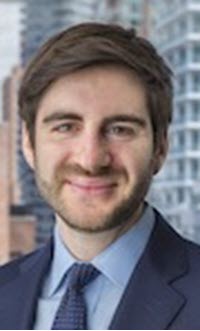Become a Patreon!
Abstract
Excerpted From: Scott A. Budow, A Mile Away, A World Apart: Life Expectancy Inequality in the United States, 15 DePaul Journal for Social Justice 1 (Winter/Spring, 2021-2022) (209 Footnotes) (Full Document)
 Ted Reid lived a full life. Born during the Great Depression, Ted served active duty in Korea before earning a law degree. He was hired out of law school by the law firm Davis Polk & Wardwell, where he made partner and spent his career. He served on numerous boards and cultural associations, ran marathons, and raised a family in Brooklyn Heights, a charming residential neighborhood. Ted passed away peacefully there at the age of 90.
Ted Reid lived a full life. Born during the Great Depression, Ted served active duty in Korea before earning a law degree. He was hired out of law school by the law firm Davis Polk & Wardwell, where he made partner and spent his career. He served on numerous boards and cultural associations, ran marathons, and raised a family in Brooklyn Heights, a charming residential neighborhood. Ted passed away peacefully there at the age of 90.
Curtis Hodges lived just over a mile away, but under very different circumstances. Hodges lived at the Walt Whitman Houses, a public housing complex run by the New York City Housing Authority (NYCHA), where he shared an apartment with his granddaughter and two kids. Like Reid, Hodges was a fixture in his community and was someone who was “loved by everyone” and considered the “neighborhood grandfather.” However, the NYCHA houses he lived in were chronically underfunded and in such dire need of vital repairs that one resident compared them to “living in prison.” The kitchens and electrical systems required particular maintenance. One Saturday afternoon, Hodges ventured into his kitchen and a fire broke out. When firefighters arrived, he was unconscious on the kitchen floor with severe burns covering his body. Paramedics rushed him to the nearby Brooklyn Hospital, but he died shortly later of cardiac arrest at the age of 73.
It is not surprising that Reid lived to be 90 while Hodges only lived to be 73. In Reid's neighborhood, the life expectancy is 89 years. In Hodges' neighborhood, just over a mile away, the life expectancy is just under 73 years, meaning that Hodges lived an average life, despite his tragic death. To put that remarkable disparity into context, if Reid's neighborhood was a country, it would have the highest life expectancy of any country in the world by several years; by contrast, the life expectancy in Hodges' neighborhood was comparable to Libya.
The life expectancy gap between these two neighborhoods reflects a national epidemic replicated across the country. People may have always suspected that the rich live longer than the poor, but the size of this gap reveals a stunning level of inequality on the most fundamental metric of human existence.
This gap does not have to be inevitable. It is the residue of society's decisions, both affirmatively and by neglect. Those decisions are codified in statutes and explained in judicial opinions, but they are also in bills that never became law and longstanding assumptions that have not been revisited. Life expectancy inequality has been thoroughly incorporated into the American experience through a comprehensive legal infrastructure that can be deconstructed and reconfigured at our will.
This article explains how our legal system contributes to unequal health outcomes for different neighborhoods and proposes responsive solutions. Specifically, it tracks the “social determinants of health,” which focus on how“conditions in the environments where people are born, live, learn, work, play, worship, and age affect a wide range of health, functioning, and quality-of-life outcomes and risks.” The social determinants of health, which are predetermined by the legal system, largely explain life expectancy inequality in the U.S.
[. . .]
Over the last century, scientists, researchers, doctors, epidemiologists, and public health authorities have achieved miracles once only imaginable. These advances have collectively reduced suffering and increased life expectancy, granting grandparents more time with grandkids, spouses more time with each other, and individuals more time to spend with the people and passions they care most about. That rising tide has lifted all boats, but vast inequality of life expectancy persists. The degree of inequality is indefensible. Regardless of one's moral outlook, surely it is unacceptable for the top one percent to live approximately 12 years longer than the bottom one percent.
The next great public health achievement can come from lawmakers spurred by public demands. Governments can change laws to eradicate, or at least vastly mitigate, the epidemic of suffering concentrated among the least fortunate. We can agree that increasing life expectancy should be foremost among our concerns and commit to supporting policies with a demonstrated capacity to improve this fundamental metric, regardless of political orientation. We can prioritize a health-centered dialogue that equally respects the dignity and value of every life, regardless of census tract, and we can collect and disperse public resources accordingly.
If we believe that both Reid and Hodges had every right to pursue equally full lives, then we must do more to make sure that people like Hodges have the opportunity to live as long as people like Reid.
Scott Budow is an Adjunct Professor of Law at Fordham Law School.
Become a Patreon!


